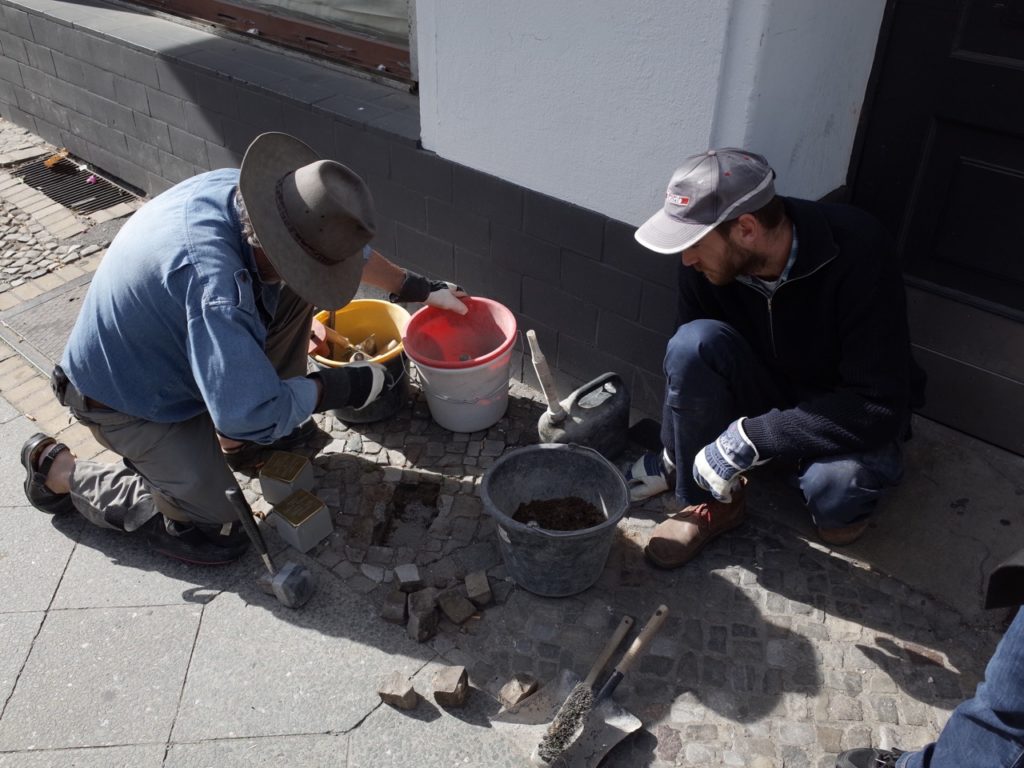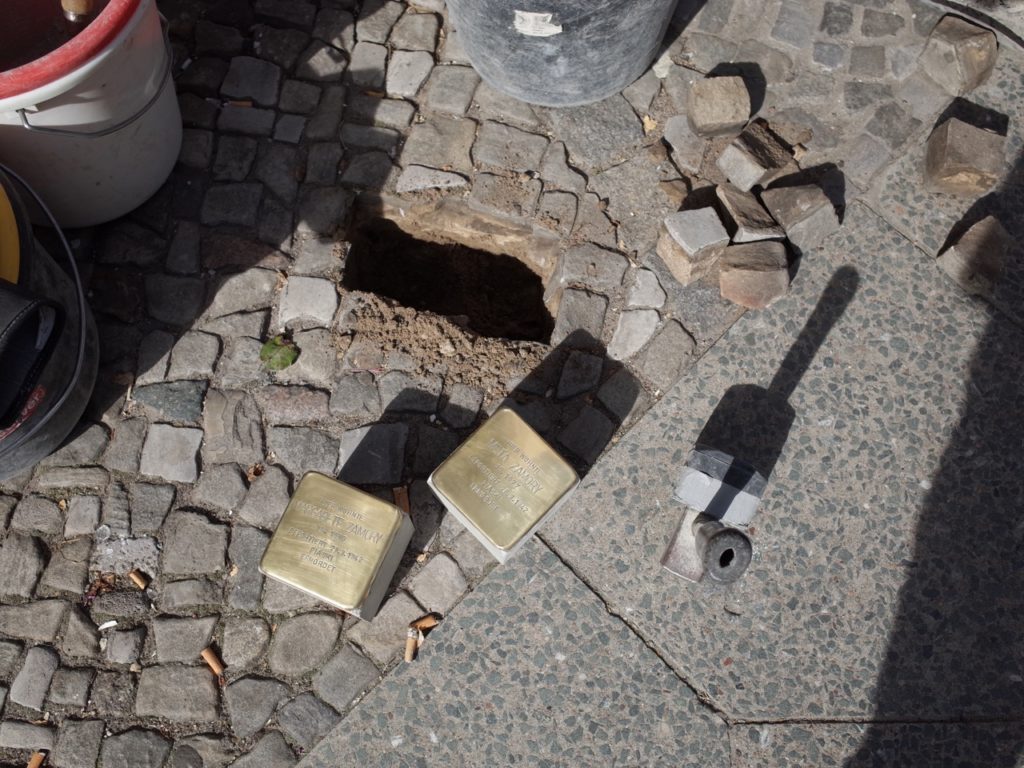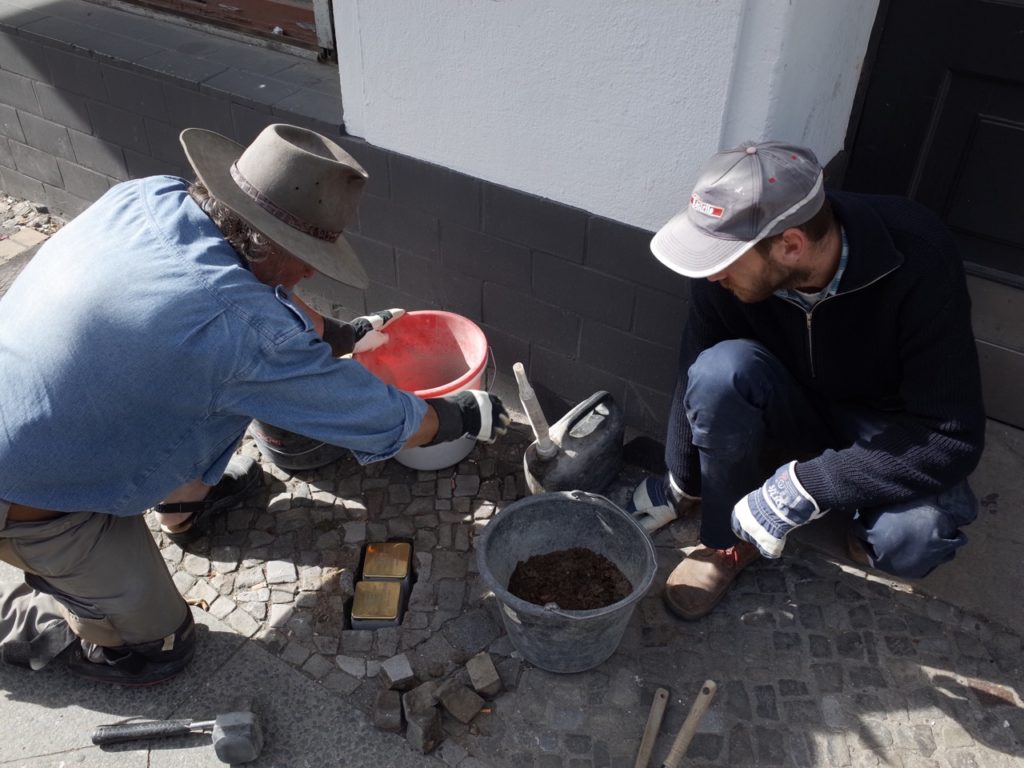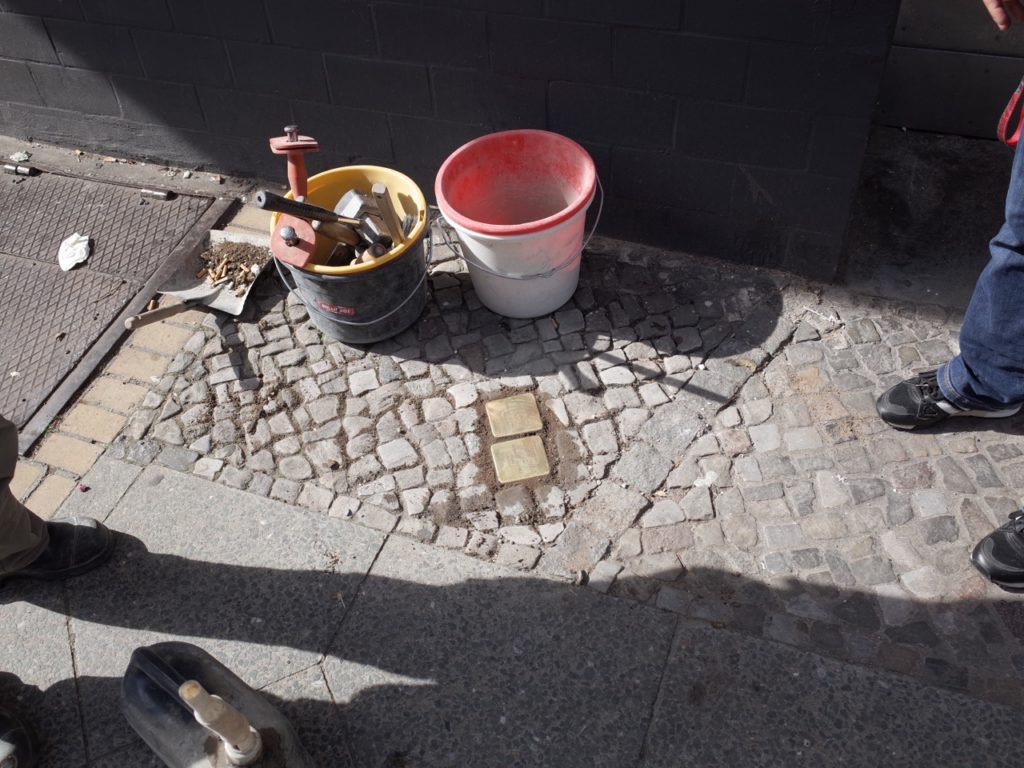Why Sponsor a Stolperstein?
We could not find very much information about the lives of the two women who lived in our building who were taken away by the Nazis. We are speaking of two middle-aged sisters: Margarete Zamory (born 1880 in Usedom) and Meta Zamory (born 1877, also in Usedom). They were deported from their home in our building, because they were Jewish, on 28 March 1942 to Piaski Luterskie Ghetto, and then both murdered in Tawniki Camp, south of Lublin in Poland.
I don’t know the details of their lives: what the neighbours thought of them, whether they tried to help them, what the ladies did for a living… all this has evaporated. And I don’t even know whether they had been married, had children, had family––were the other Zamory’s I found in a database of Berlin Holocaust victims related? What did people feel when they were gone?
We did know that we had to memorialize them in some way. I looked up in the wartime address books of Berlin, which on the drop-down menu can be consulted by street. I looked up my street and street number and recorded all the names that lived in my house. I then cross referenced all the names against the central database of victims of the Holocaust museum Yad Vashem. I then did some additional research, in the Federal Archives, to confirm that the sisters in the building were the same who were eventually murdered at Tawniki.

Stolpersteine (‘stumbling stones’) are the largest monument in the world, in pieces. Each raised bronze plaque is 10×10 cm and there are 54 000 of them; you can do the math. The fact that they are raised is important, because you might feel one with your foot when walking down the street, stumble over it, and look down to read. The stones are placed in the pavement before the last known address of a Holocaust victim. They begin with the words “Here lived”. They are engraved also with the name, birthdate, date of deportation and when the person was murdered––or as much as is known. That the stones don’t hold back from using the word ‘murdered’ gives them honesty and directness. Artist Gunter Demnig initiated the project in Berlin in 1997, first as an illegal operation (it became legal in the capital in 2000). Nowadays, they can be found in more than 20 European countries, in 1400 different communities.
When we decided to sponsor two Stolpersteine (details on sponsorship, you can find here), we asked around our friends, to see if they wanted to co-sponsor, and the response was immediate. I was impressed how many people who did not know the victims, who had no direct relation to them, nonetheless wanted to sponsor a memorial to them. As one friend told me later, it gives one hope for all the problems Europe is currently facing with a resurgent far right and its accompanying xenophobia. These stones strike me as more important than ever.
This September, Demnig and his crew showed up in their Peugeot van in front of my apartment building in Berlin, and started pulling up the paving stones. Demnig wore a great big hat, and it seemed that he was a little camera shy. The operation took about 15 minutes, with the help of a shovel, hammer, pail of cement.
When they were done, the stones installed, suddenly there was a presence in front of the building. What does the memorial do? Is it an illusion, a trick that we can substitute the dead with pieces of metal? Or is the importance one of pedagogy––that people walking down these Kreuzberg streets will be struck by the shine of so many memorials to the dead.
Gunter Demnig says that ‘A man is first forgotten when his name is forgotten’, but I can’t help but think that what is most impressive, again, is everything else we don’t know: the great sense of unknown that laps around these stones. They are like tiny islands in a sea of darkness.
I am impressed by this great maw of forgetting––but when I look down at these two shiny plaques that are now in front of my building, at least I see something solid, tangible. I have been instructed by the Stolpersteine foundation on how to care for them, what kind of soft cloth to use and the correct ratio of water to vinegar to shine up the brass. I’ve since found out that baking soda and lemon juice works too. I go down every other week now and polish them. I wonder how many people have stumbled over them, whether they have tripped, what they have felt, what they wish they remembered. All these things are tangible to me, and maybe that is why we need these stones.





One thought on “Why Sponsor a Stolperstein?”